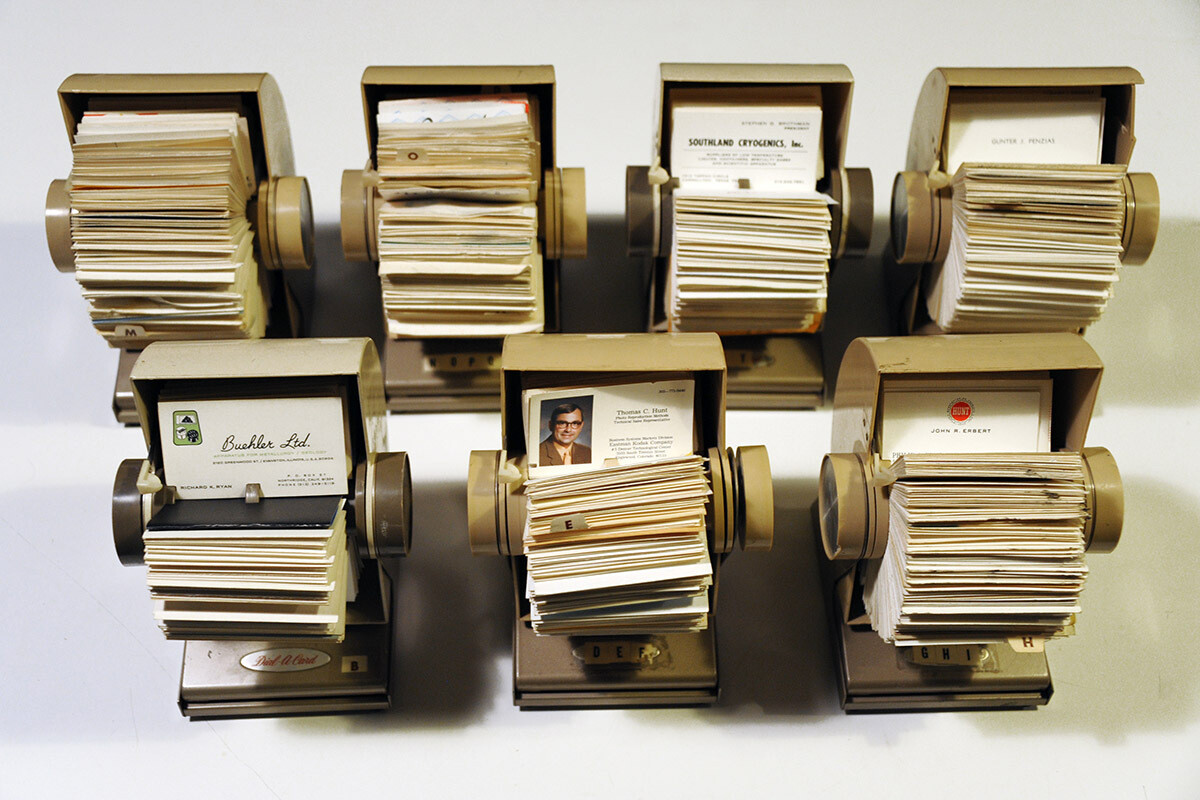New Mexico’s Black Hole

BELIEVING, AS SOME of us do, that contemporary America, and the post-modern, post-industrial, anthropotechno-geomorphological age was born in the big bang of the manmade sun, the CLUI has had a long interest in Los Alamos Lab and its legacy.
Part of this legacy is the Black Hole, a place that operated in the town of Los Alamos, selling surplus equipment and parts from the lab, selected and collected in a former grocery store by its founder and owner, Ed Grothus, a former lab worker. After he died, the Black Hole stopped sucking things in, and has slowly been spewing its remains into the world without replenishment, in an effort by his heirs to vacate the property.
The impact of the fantastic array of material the Black Hole has helped release into the world over its decades-long existence is unmeasured, yet surely profound. One set of material from the Black Hole, now in the Center’s Radioactive Archive, is a set of rolodexes. They contain hundreds of business cards kept by some unknown office in the lab, over a period around the 1960s and 1970s, the peak of the arms race and its technological development. They are a physical record of everything from major military contractors to obscure high-tech software widget suppliers–many of which are no longer extant, or have evolved. It’s an indexical inventory of obsolete technology and broken business contacts, from the recent past. They are also a minutely definite printed historical record, still potentially relevant to an understanding of the present.
Seven of these rolodexes are currently traveling around the United Kingdom, in a Hayward Touring exhibition called Curiosity: Art and the Pleasure of Knowing. The legacy of the Black Hole was also recently acknowledged in an exhibition at the Center for Contemporary Art in Santa Fe, called Atomic Surplus. It contains work selected by the curator, Erin Elder, from various sources, such as sculptures by Tony Price, a friend of Ed Grothus, who often made things from surplus from the lab and the inventory of the Black Hole. The exhibit also featured photographs from the CLUI exhibit Perpetual Architecture: Uranium Disposal Cells of America. ♦